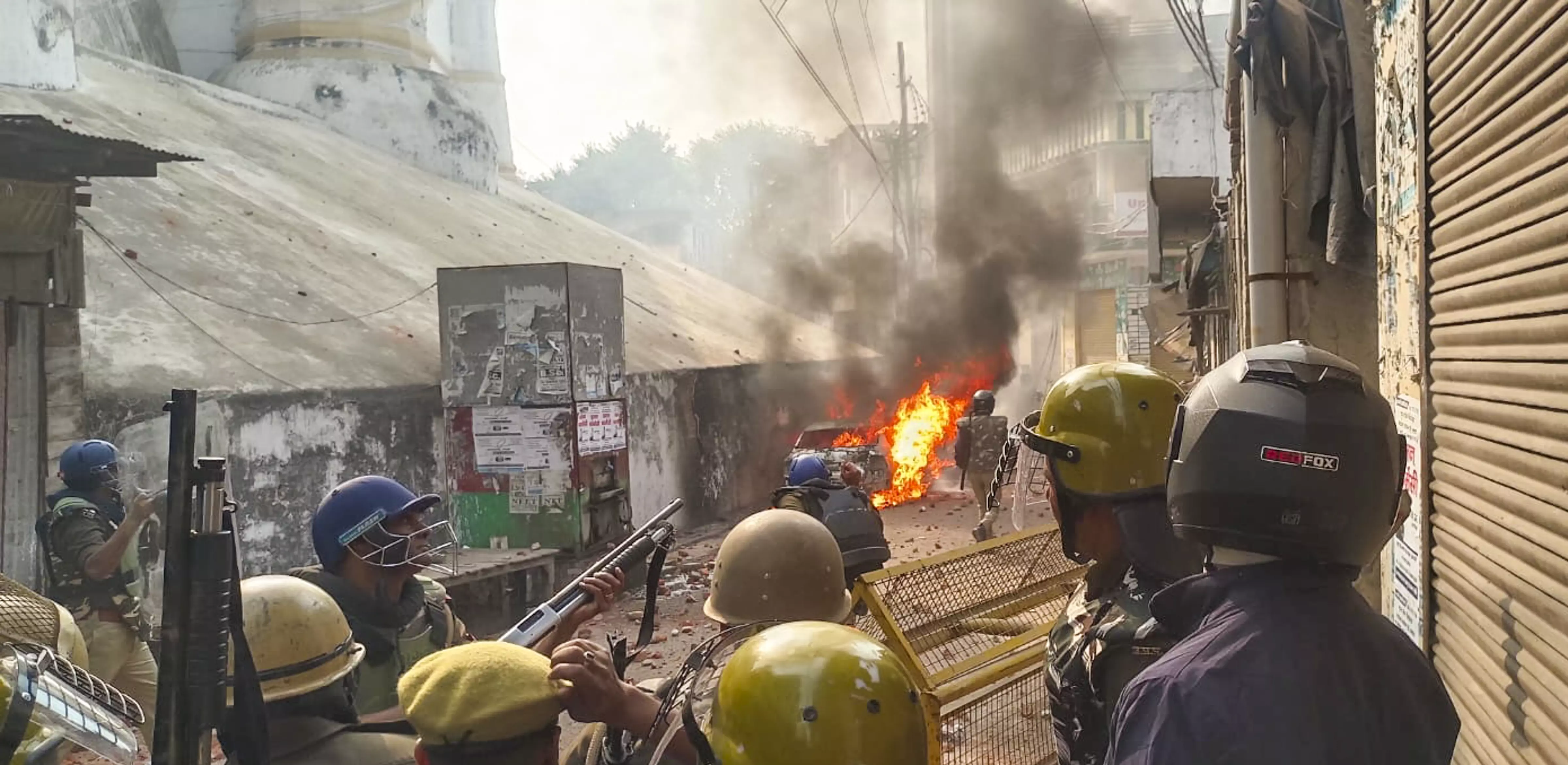
- Home
- India
- World
- Premium
- THE FEDERAL SPECIAL
- Analysis
- States
- Perspective
- Videos
- Sports
- Education
- Entertainment
- Elections
- Features
- Health
- Business
- Series
- In memoriam: Sheikh Mujibur Rahman
- Bishnoi's Men
- NEET TANGLE
- Economy Series
- Earth Day
- Kashmir’s Frozen Turbulence
- India@75
- The legend of Ramjanmabhoomi
- Liberalisation@30
- How to tame a dragon
- Celebrating biodiversity
- Farm Matters
- 50 days of solitude
- Bringing Migrants Home
- Budget 2020
- Jharkhand Votes
- The Federal Investigates
- The Federal Impact
- Vanishing Sand
- Gandhi @ 150
- Andhra Today
- Field report
- Operation Gulmarg
- Pandemic @1 Mn in India
- The Federal Year-End
- The Zero Year
- Science
- Brand studio
- Newsletter
- Elections 2024
- Events
- Home
- IndiaIndia
- World
- Analysis
- StatesStates
- PerspectivePerspective
- VideosVideos
- Sports
- Education
- Entertainment
- ElectionsElections
- Features
- Health
- BusinessBusiness
- Premium
- Loading...
Premium - Events

When violence is curated to become a repetitive montage, it loses its sting; the horrific becomes banal; here is why we should refuse to look away or stay silent
The death toll in Sambhal violence in Uttar Pradesh, on the last count, has risen to five. Five lives extinguished, absorbed into the ether of ‘breaking news’ and muted outrage. Schools have reopened. The market for daily essentials hums again. Internet services remain suspended, but the buzz of “normalcy” is in the air, like a cloud straining to hold its shape. Somewhere in this forced return to routine, the embers of grief, fear, and fury are swept beneath the crust of a wounded district. A ‘sensitive area,’ as the authorities would call it. Sensitive to what, exactly? To its own grief? To the calculated dismantling of its history?
The unrest began with the court-ordered survey of a Mughal-era mosque, following a petition, as it often does these days, claiming that it was originally a Harihar temple. The events unfolded like clockwork: the outrage, the violence, the curfew. The forces of the state arrived to “restore order,” and fired bullets (according to one version; it was the protesters who used country-made weapons, according to another). This script has played out so often that its beats are as predictable as the change of seasons.
Once again, an old wound has reopened, and a new scar seems to be forming. Life, we are told, will go on. And it does — because nothing shocks us anymore. The truth is that today, in India, hate has become pedestrian. Violence, a casual shrug. The nation finds itself anaesthetised, numbed by an incessant barrage of violence that no longer disrupts — it defines.
The daily diet of despair
Scroll through the news or X on any given morning. Headlines/tweets drip with blood, venom, injustice. We have seen much worse in years past. A lynching here, a riot there. Arrests of poets, comedians, students. In the wake of Sambhal violence, the Uttar Pradesh government is — as it’s wont to — planning to punish the protesters. So, very soon, you will see bulldozers roaring through homes and lives — without a whisper of protest from those watching. What will be our reaction? At best, a sigh. At worst, nothing at all.
Also read: Dhaka using communal, anti-India card by arresting Hindu leader
This desensitisation isn’t accidental — it’s engineered. When hatred is normalised, when violence is curated to become a repetitive montage, it loses its sting. The horrific becomes banal, like the static buzz of an appliance left on in the background. This is how regimes of oppression operate world over, not by hiding their deeds (though it’s never off limits), but by performing them so often — not everywhere all at once, but in a series of scattered disruptions across the country — that the audience grows bored and stops looking, stops caring.
The orchestration of hatred
Hate in today’s India isn’t a spontaneous combustion; it’s a carefully lit fire. From WhatsApp forwards to televised debates to the government’s tacit endorsement, hatred has been validated, institutionalised, glorified, and rewarded. It’s no longer a reaction but a directive, with scripts handed out by those in power to eager participants, mostly unemployed youth, drugged by ‘the opium of the masses’: religion.
The hate is insidious, precise in its targeting. Muslims, Dalits, Christians — the ‘others’ are marked and demonised. The language of exclusion is coded in legislation, in sermons, in school curriculums, in newspaper columns, in tweets, in commentaries. It’s in the renaming of streets, in the alteration of history books, and in the photos and videos shared on social media without fear of consequence. A handle on X recently shared a photo of a young man shot in Sambhal violence, lying in the debris, with blood oozing out from the bullet-ridden parts, with a love emoji; he was gloating over a dead body, and had no qualms about making it public.
Most likely, that X user didn’t even know the deceased, but the knowledge that the young chap happened to belong to the minority community was enough for him to celebrate. It isn’t just the act of hate that terrifies — it’s the applause. And the man on X got plenty of that. We are living in a time, when a mob drags a man from his home, beats him to death, and livestreams the event, it doesn’t shock no one; it trends. The act becomes spectacle; the spectacle becomes currency. That currently circulates and becomes part of a nation’s bloodstream, rupturing its moral viens.
The silence of the complicit
Complicity wears many masks in India today. There’s the active participant, the one who wields the hammer or the truncheon or the revolver or the pistol. But more pervasive is the silent majority, the spectator who watches but does nothing. Silence is the new endorsement, an implicit and implied agreement that says, This is fine. This is normal. But silence isn’t passive; it’s powerful. It is the glue that holds together a culture of impunity. When silence swells to the size of a nation, it becomes indistinguishable from consent. The oppressors know this. They thrive on it.
Distracted from distraction by distraction
There is no denying that the absurd has reached a fever pitch in Indian politics today. But this absurdity is no accident — it’s a distraction. Remember that the Sambhal violence came close on the heels of the news about Gautam Adani’s indictment for bribery in the US. It has been a pattern. In these past 10 years, we have all been distracted from distraction by distraction. Everytime you and I talk about issues that matter — unemployment or inflation, for instance, that’s killing the middle class — there will be something or the other to distract us.
Also read: In defence of Swara Bhasker: Why she should not be vilified for her choices
This game of distraction, along with the circus of hyper-nationalism, chest-thumping, and cultural nostalgia, serves a dual purpose: it entertains the masses while quietly normalising hate. The propaganda machinery, engaged in something far more insidious, meanwhile, remains quietly at work. There is a danger here, too. When the absurd becomes commonplace, it dulls the senses. So, when a Minister speaks of mythical bridges and plastic surgery in ancient India or the another minister posts a reel of a railway staff administering CPR to a conscious patient and lauds the department for its dedication, you struggle to arrive at a proper response. Whenever it happens next, remember that at the same time, some streets in some state or the other, from Uttar Pradesh to Manipur — are running red with violence.
The collective indifference
India has always been a land of survivors. From Partition to Emergency to communal riots — the country has weathered tragedies that should have torn it apart. But survival is a double-edged sword. It builds resilience, but it also breeds a dangerous familiarity with suffering. Today, that resilience has metastasised into apathy. People don’t just survive hate and violence — they adapt to it. They learn to sidestep it, to live alongside it as though it were a pothole in the road or a power cut during summer. The line between survival and surrender blurs.
The numbness, this inability to feel shock or outrage, this emotional autism though exacts a toll of its own. A society that cannot be shocked cannot be moved. It cannot protest, cannot resist. When nothing shocks, nothing changes. It’s as simple as that. Think of the student protests of the past, when the nation rallied around a cause. The Mandal Commission, the Nirbhaya case, and more recently, the farmers’ protests and the Kolkata doctor rape-murder — these moments jolted the nation, commanded our attention and engagement. But we have entered a phase now where even the most heinous crimes are met with, by and large, collective indifference.
Reclaiming our capacity to feel
If nothing shocks us anymore, the question isn’t Why is this happening? It’s, Why are we letting it happen? This isn’t a plea for outrage for outrage’s sake. Outrage without action is just noise. But the ability to feel, to be shocked is the first step toward demanding accountability, toward resisting normalisation of bigotry. In his introspective ballad about self-exploration and struggles with mental health, British singer-songwriter Robbie Williams croons: “Come on hold my hand/I wanna contact the living/Not sure I understand/This role I’ve been given/I sit and talk to God/ And he just laughs at my plans/ My head speaks a language, I don’t understand/I just wanna feel real love/Feel the home that I live in/ ’Cause I got too much life/ Running through my veins, going to waste.” To steal Williams’s expression, we have too much life running in our veins and we will lay waste to all of it if we don’t feel. Feel a mother’s pain when she loses a son to mindless violence. Feel a family’s anguish when its house is bulldozed. Irrespective of religion.
To be fair, India has enough of sane voices — what it lacks though is listeners. Activists, journalists, artists, and students continue to speak out, often at great personal risk. But their cries fall on ears plugged by indifference or drowned out by the din of propaganda. India also needs to feel again. To be shocked, horrified, outraged. To let those emotions translate into action. This isn’t easy in a nation that has been numbed into submission and silence, but it isn’t impossible. Perhaps the antidote lies in rediscovering humanity, in refusing to look away, and not staying silent. It lies in conversations, in art, in the courage to stand up and say, This is not normal. This is not who we are. Until we reclaim our capacity to feel, to be shocked, India will remain a nation anaesthetised — a place where hate and violence thrive not in the shadows but in plain sight, met not with outrage but with a shrug.


